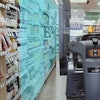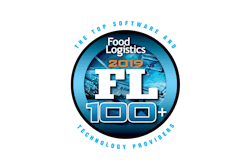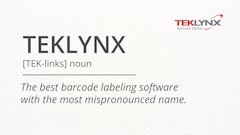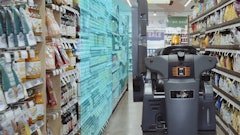
In order to be competitive in the food space, you must be transparent in your supply chain.
Right now, traceability is directly correlated with transparency – this is crucial, especially at a time when more consumers are basing their purchases on the product’s effectiveness, quality, sustainability and visibility efforts.
According to Natural Products Insider, 94 percent of consumers are more likely to be loyal to a brand that offers complete transparency, while 39 percent say they are willing to switch to a brand that is more transparent.
Read Next: The Global Food Supply Chain
Meanwhile, the FDA, FDC, National Advertising Division, attorneys general, shareholders and more are pressuring brands to become more transparent as the number of recalls have increased significantly. According to a report from the U.S. Department of Agriculture, which regulates meat producers, recalls jumped 83.4 percent from 2012 through 2017, while those issued by the FDA, which regulates everything else, increased 92.7 percent. According to the Grocery Manufacturers association, recalls can also cost companies upwards of $30 million per year.
"Food safety and loss are key elements that benefit from track and trace technology,” Krenar Komoni, CEO and founder of Tive, tells Food Logistics in the March issue. “It includes traceability and tracking from the producer to the consumer and is a vital safety component, given the fact that one in 10 persons in the U.S. will experience an episode of food illness this year.”
Innovative solutions – such as blockchain – make it possible to track and trace the food supply chain from farm to fork. In addition, it also delivers the data that is needed to allow companies to look for process inefficiencies, equipment inefficiencies or other incidents along the way.
The ongoing development of the digital ledger shows promise in solving the changing environment of the global food supply chain. For example, blockchain allows companies to trace products back to secondary and tertiary suppliers, extending all the way back to the farm. By giving secure access to the data and knowledge, supply chains become more complex and latent.
Read Next: Label Transparency Done Right Builds Trust
IoT and mobile technologies can also provide much needed visibility into the global food supply chain by reducing the possibility for error by automating tasks that were once manual pen and paper processes.
The emerging technologies reduce human errors, allowing companies to meet transparency expectations from higher ups and consumers. In addition, they also enhance productivity and profitability by enabling workers to report information in real time.
Preventing a recall can save a company an extensive money and also protects a brand. Historically, the global food supply chain has had difficulty with its transparency efforts. Food and beverage companies will need to begin setting standards when it comes to their visibility efforts, so it doesn’t attract negative consumer and media attention.
Brands must market their transparency on all platforms to gain consumer trust.
The Center for Food Integrity identified seven elements of clean label culture to help communicate transparency:
1.) Motivation—act in a manner that is ethical and consistent with stakeholder interests.
2.) Disclosure—share all information publicly, both positive and negative.
3.) Stakeholder participation—engage those interested in the brand’s activities or impact.
4.) Relevance—share information stakeholders deem relevant.
5.) Clarity—share information that is easily understood and easily obtained.
6.) Credibility—share positive and negative information that supports informed stakeholder decision-making.
7.) Accuracy—share information that is truthful, objective, reliable and complete.
Read Next: Smart Labels Clear the Way for Consumer, Enterprise Transparency
Some companies are starting to implement smart labels to their products. Right now, shoppers want more information and clarity about what goes into their food and how it gets to the grocery store. Adding smart labels connects products to a digital platform, enables companies to collect data and respond to consumer interactions.
The labels offer transparency at a consumer level, allowing them to use their smartphones to collect additional information, such as recipes or additional ingredients.
Consumers should not have to guess whether or not the food that their family is eating is safe. By allowing visibility into the supply chain, shoppers will gain trust in companies and become loyal to them.





















